Office wellness trend rising up as luxury end-of-trip facilities create spa-like havens for modern workers
The once dark and dank depths of city office buildings are increasingly being transformed into six-star end-of-trip facilities in a major shift towards wellness in workplaces.
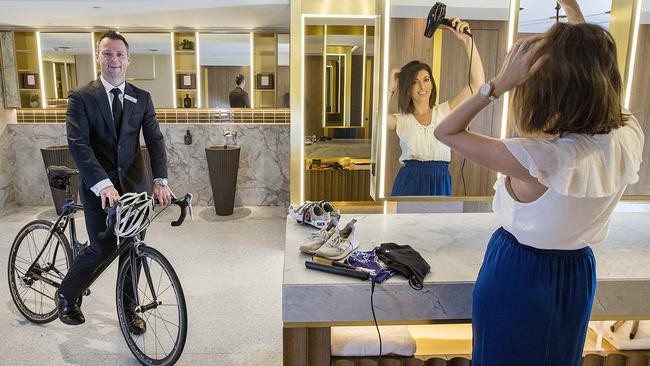
QBM
Don't miss out on the headlines from QBM. Followed categories will be added to My News.
SOME serious tripping out has been going on in the basements of Brisbane’s corporate towers of power.
But it’s definitely not what you’re thinking.
The once dark and dank depths of the city’s office buildings have been transformed with soft, muted lighting, fluffy towels and the amenities of six-star hotels.
They have evolved into spa-like havens for pampered, pedal-pumping and fitness conscious
workers.
End-of-trip (EOT) facilities — offering secure bike parking, lockers and somewhere clean and comfortable to shower and get changed — first emerged in the CBD over a decade ago.
Since then, they have become central to a major shift towards holistic wellness in workplaces.
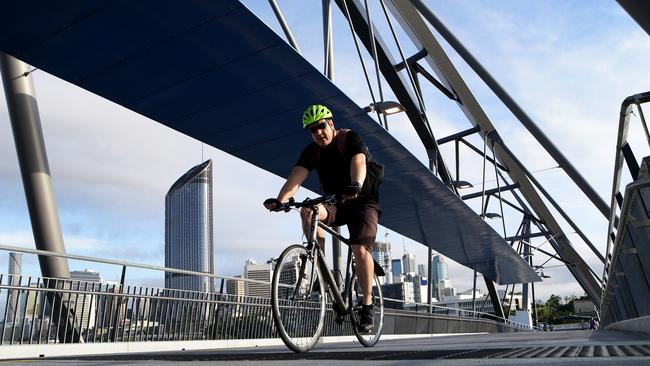
No longer just the domain of MAMILs (middle-aged men in Lycra) they have evolved into sophisticated facilities that meet the broader demands of modern workers and their active lifestyles.
Increasingly, in a competitive office leasing market, the city’s EOTs also have become more elaborate and luxurious.
Millions of dollars have been spent by CBD landlords as they up the ante on each other in a bid to lure and retain tenants.
Striking $1.5 billion vision unveiled for modern cityscape in Ipswich’s Ripley Valley
New era of shopping and dining beckons as Brisbane CBD’s retail reinvention shapes up
Top architectural firms are often brought in to design and fit out the spaces. High-end marble and stone finishes as well as opulent reception areas, cool-down rooms and executive-style lounges are not uncommon.
Grooming stations with top-of-the-line hair straighteners and dryers, irons, airing rooms, hydration stations, laundry and bike repair services as well as fresh towels are the norm.
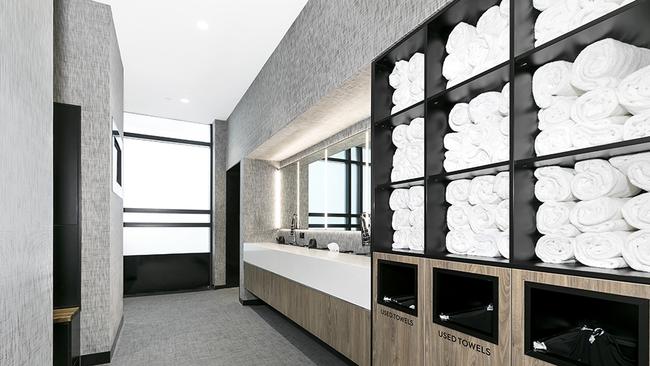
“A lot of them now have that spa-like feel about them,” says Colliers International’s director of office leasing, Kelly Moon.
“The finishes and fittings are as good as you’ll see in a six-star hotel.
“It has really snowballed over the past decade and every new commercial office building development is now really pushing the envelope of design and setting a new EOT benchmark.
“Cycling was always thought to be the driver but once these facilities started popping up non-cyclists started using them as well.
“Culturally, it’s part of a much bigger picture in terms of fitness, wellness and work-life balance. But from a property perspective, it’s really part of an overarching theme of buildings increasingly needing to provide sustainable workspaces as well as amenity and community.”
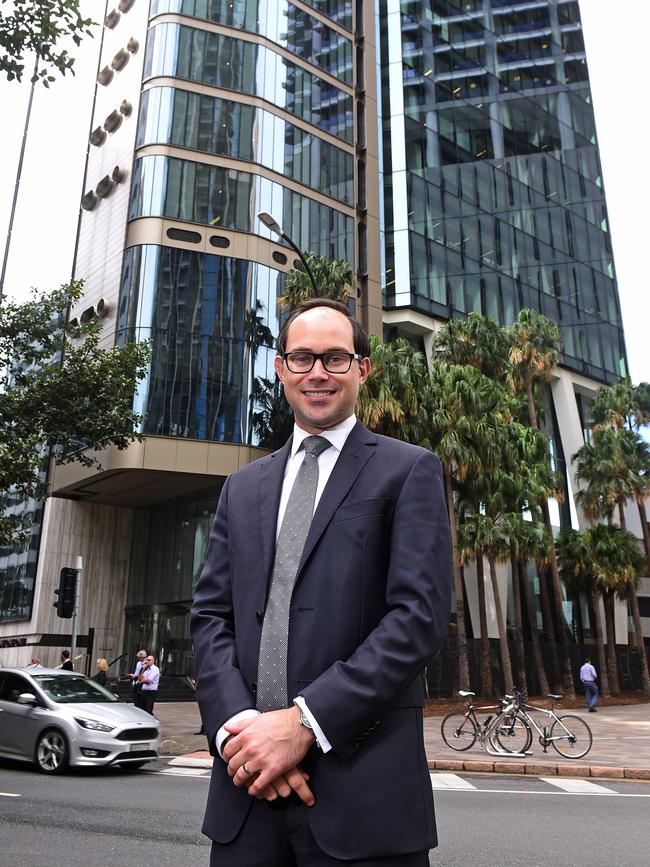
Moon says EOTs are not only a significant drawcard but — particularly for blue chip tenants — a must-have, and at the top end of town many big companies now demand their own exclusive EOT facilities within a building or even within their own tenanted area.
“It’s definitely a key criteria and important to them, so much so that when trying to shortlist options the difference might come down to the EOT,” he says.
The 41-level Santos Place at 32 Turbot St was completed in 2009 and a game changer as Brisbane’s first office tower designed with a dedicated EOT facility. Within a few years, many of the city’s existing office towers had begun sacrificing basement carparking spaces to retrofit EOT facilities.
Interestingly, at the same time, many of the same corporate towers began introducing hotel-like concierge services.
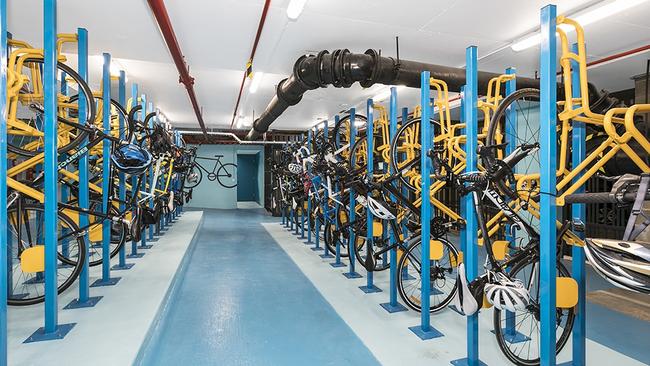
Cox Architecture director Brooke Lloyd says EOTs have been integral to a “blurring of boundaries” between commercial, hospitality and residential design in workspaces.
“The workplaces and commercial buildings of today can basically do everything for you,” she says.
“People are now going to the lobbies of commercial office towers to go to restaurants or get the best coffee in the city,” she says. “It has been quite a purposeful shift in design to create little urban hubs at the foot of these buildings and EOT facilities are a part of that.
“In terms of the quality and level of amenity that’s being offered by these facilities it has gone quite berserk.
“Previously they were just a bunch of showers and a few loos but now they are far more sophisticated and some of them even have a whole wellness suite as well.”
According to Lloyd, who has been involved in the design of a number of EOTs in the Brisbane CBD, the next generation EOTs will take the trend to a new level —
literally.
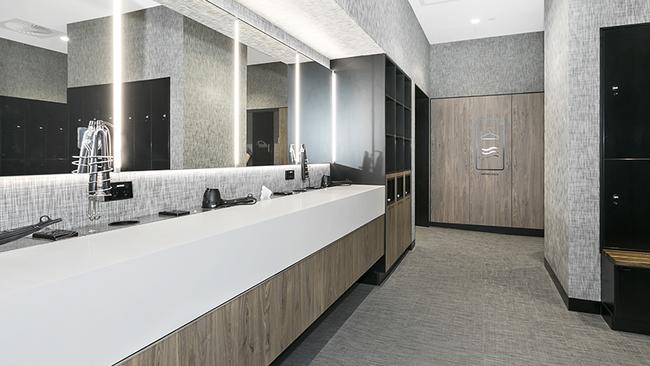
“The next generation of EOTs are coming out of the basement and they’ve got access to natural daylight and coffee shops bolted on to them.
“A lot of developers also are looking to have the entrance to these facilities as a real design feature.
“So they’ve turned from what was once a back-of-house amenity where people discreetly popped into in their Lycra to something that is celebrated and on-show and given that prime real estate above ground.
“But it’s still all about consideration to the architecture in making that journey quite seamless from road to EOT and to your desk.”
The rise of the city’s EOTs is also of no surprise to John Hack, who was a pioneer when he opened Cycle2City — a commercial EOT facility in King George Square’s bus station — in 2008.
“We were the first large scale, inner-city end-of-trip facility anywhere in the world,” he says.
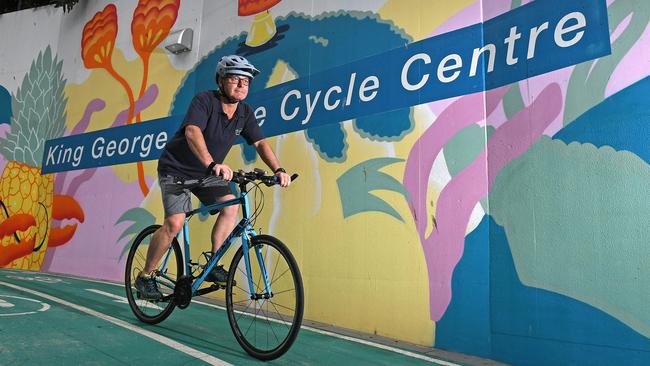
“A lot of developers from around town and around the world have looked at our facility and
recreated it. Most of those EOTs are free for tenants, so we’re basically creating our own
competition.
“But that’s all right because it’s a great community thing.
“And the more EOTs there are, the more people will ride into the city, and those other EOTs will fill up and people will want to take advantage of commercial facilities like ours.”
If the latest statistics are right, that is likely to happen sooner rather than later.
More than 10,000 people — an increase of 75 per cent over 10 years — now cycle to work in Brisbane. There are also currently more than 680km of bikeways across the city and more than 200 locations where bikes can be parked, including council and privately-operated facilities.


